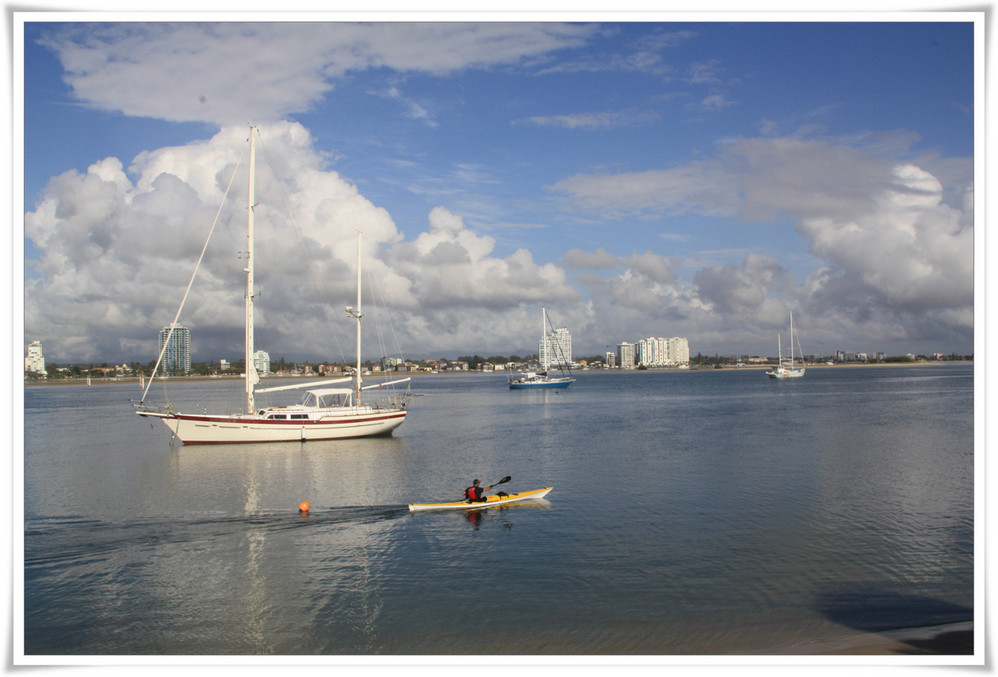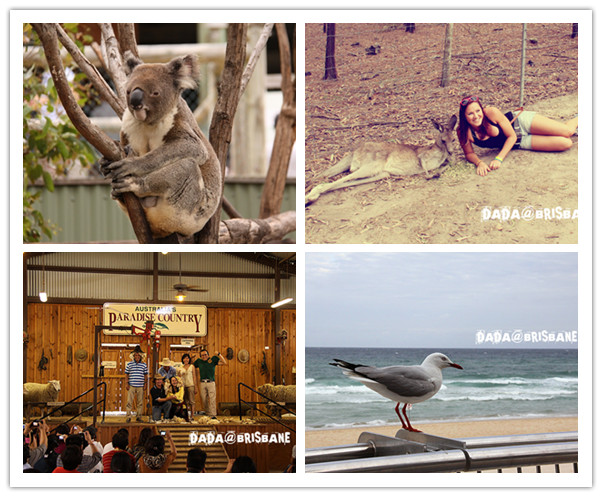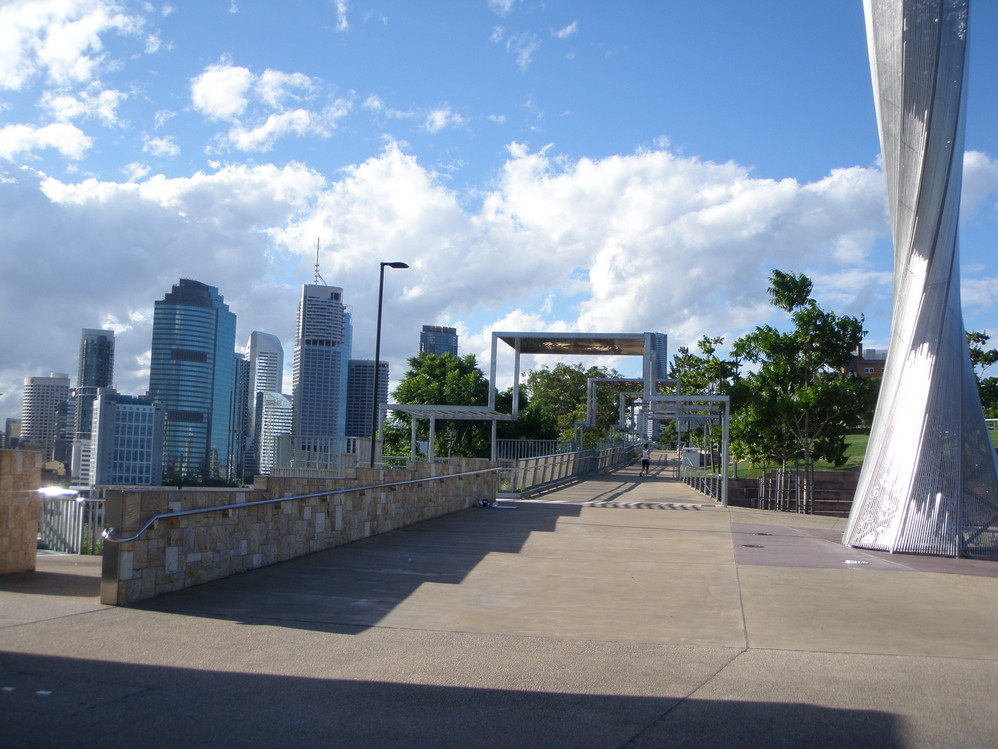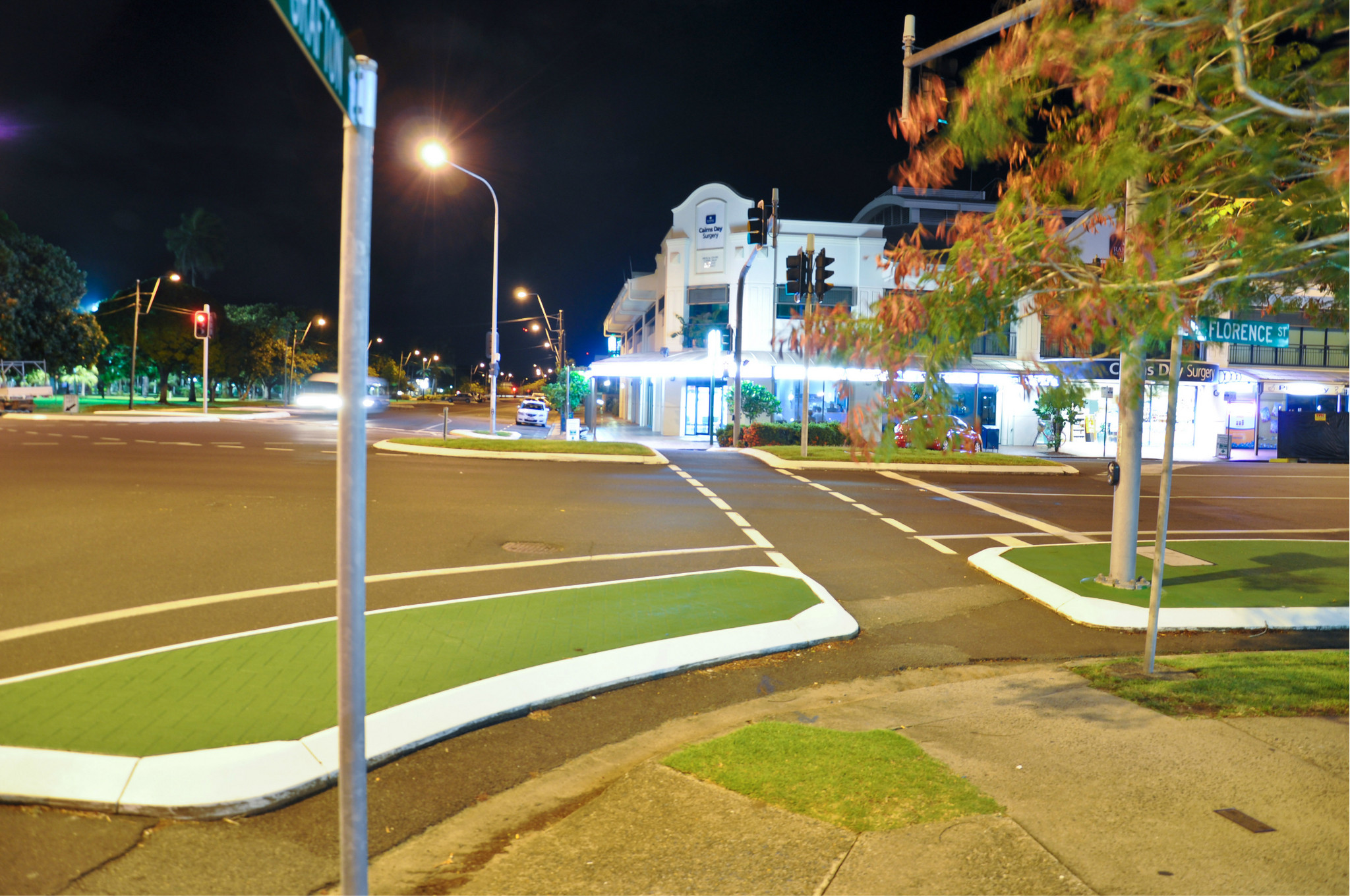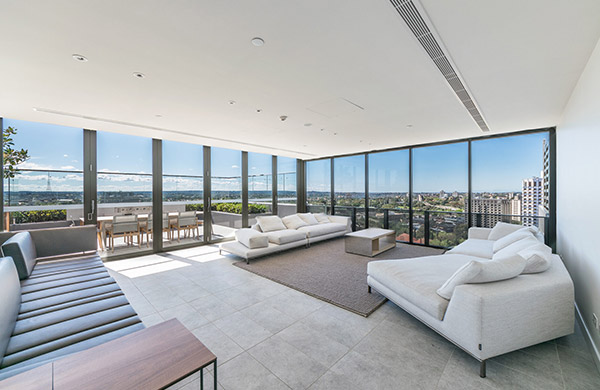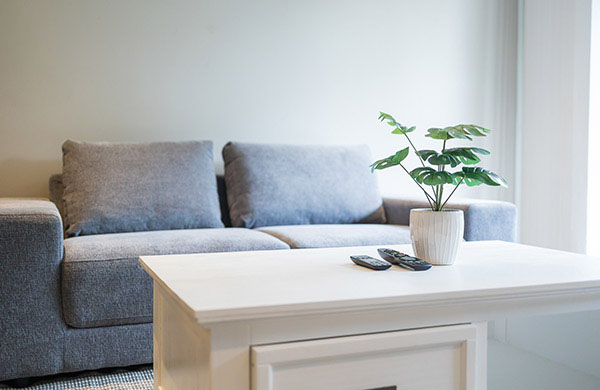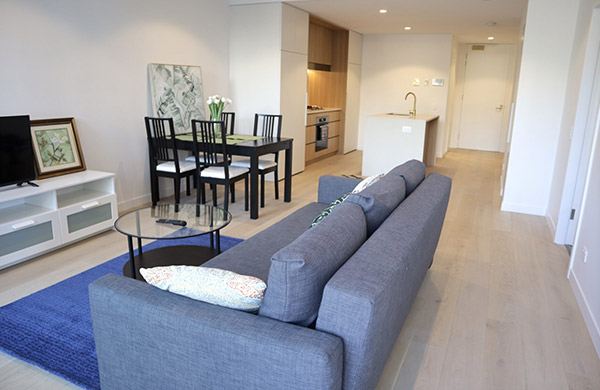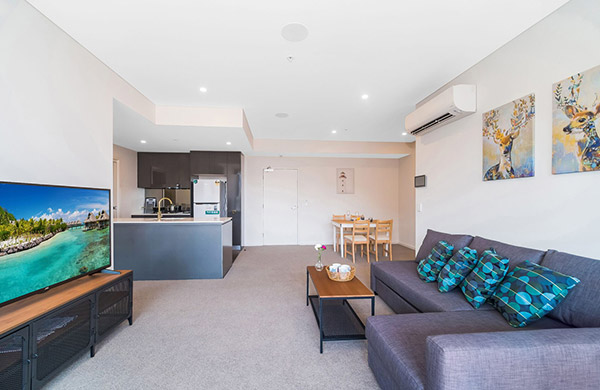Travel Guides and Stories
Australia Travel Day 2: Gold Coast and Brisbane
At exactly 6 a.m. local time, still half asleep, we were woken up by the hotel’s morning call. That’s when I noticed the “wake-up” device was called an iHome. We had gone to Chinatown the night before and got back late, so I hadn’t paid attention to it — but the device has a dock for Apple devices on top. I didn’t take a photo in the morning, but here’s a similar one from the web. I’ve always been interested in new tech gadgets — this one’s probably been around for a while, I just didn’t know about it. After a quick wash, I dragged my luggage out, and heard familiar Chinese songs coming from the corridor. It must have been one of our group’s youngsters playing music on an iPhone connected to the iHome.
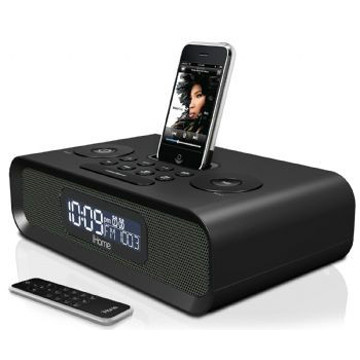
We had to catch an 8:30 a.m. flight to Gold Coast City, so it was an early start. Looking at my watch, still on Beijing time, it was just after 3 a.m. back in China — my family was still sound asleep, and I was still jet-lagged… tough! Breakfast was a buffet Western-style meal, pretty decent. Then we took a coach to the airport. In order to ease Melbourne’s train traffic congestion and encourage early travel, the city offers free tickets before 7 a.m. — called the “early bird ticket.” If you arrive at the station before 7 a.m., you can ride the subway for free. Our flight was on a Jetstar Airbus A320, a budget airline similar to Spring Airlines in China — no free food, but the seats were comfortable.
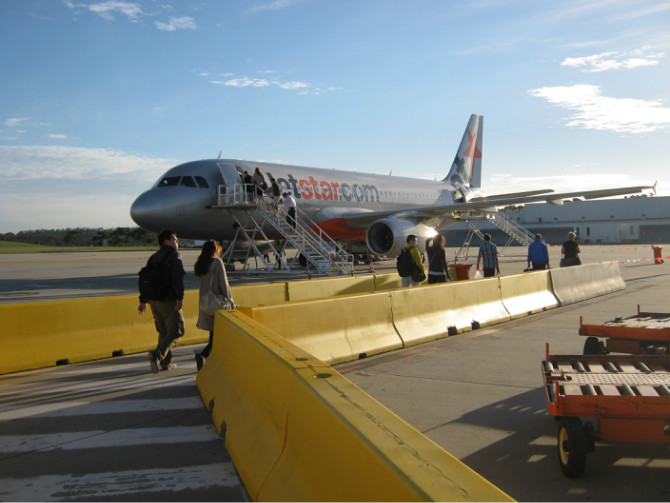

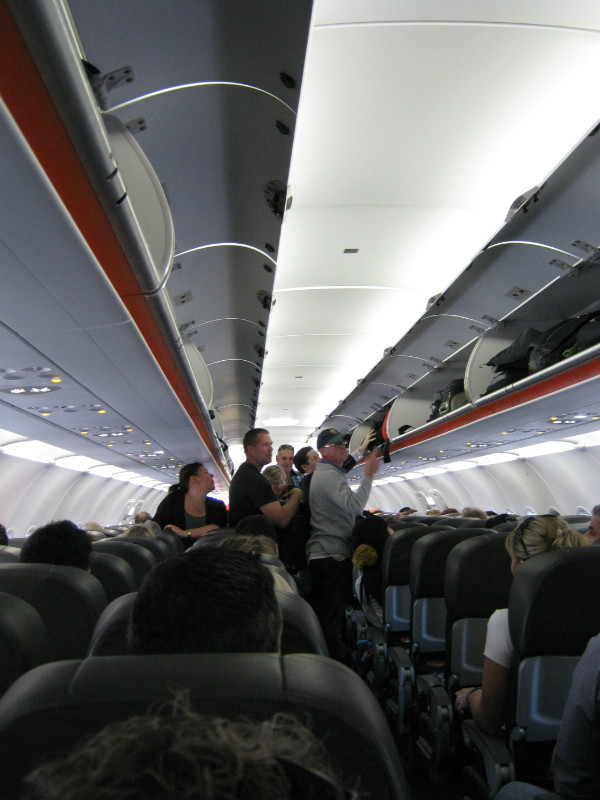
This reminded me of Mr. Bean’s airline prank with a trash bag — much bigger than the ones on Chinese flights.
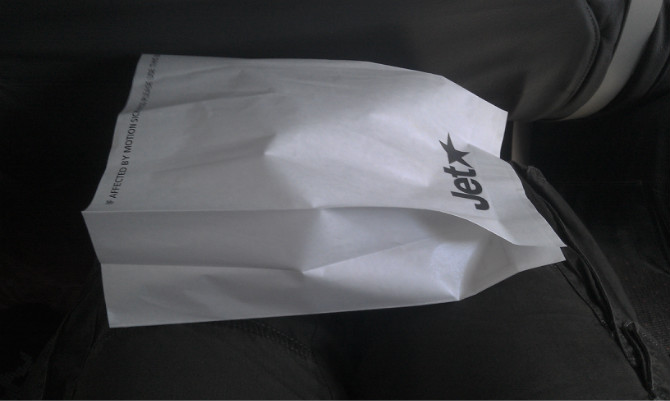
After about 2 hours, we landed at our destination. The landing was a bit thrilling — instead of smoothly touching down, it felt like the plane dropped several meters onto the runway. There was a loud “bang,” but it turned out fine — just felt like the captain was joking with us. Everyone laughed, including the Aussies. Our local guide was a lady from Chengdu, Sichuan, who had lived in Australia for about 10 years. Sunshine Coast is in Queensland, Australia’s second largest state, south of the Tropic of Capricorn, with long hours of sunshine, a warm climate, and over 300 sunny days a year — hence Queensland’s nickname, “The Sunshine State.” Itinerary: After lunch, we headed to Brisbane and stayed in Gold Coast City for two nights. Australia is vast, covering 7.69 million square kilometers, but with a small population of just over 20 million. There are “three things in abundance”: flies, overweight women, and drinkers. It’s also known as the country on the sheep’s back, the country of coal, and the country of kangaroos. The east coast faces the Pacific Ocean, and the west coast faces the Indian Ocean. The capital, Canberra, is a young city with just over 300,000 people (eighth largest city in Australia), an area of 2,395 sq km, and more than 50% of the area is national park or reserve. It’s at the north end of the Australian Capital Territory, 280 km southwest of Sydney and 660 km northeast of Melbourne. The guide joked that Canberra is a “ghost town” — busy by day, deserted at night. For lunch, we went to Taihu Seafood Restaurant, a Chinese restaurant run by a Hong Kong owner. The food was good, but the local rice wasn’t — not much flavor.
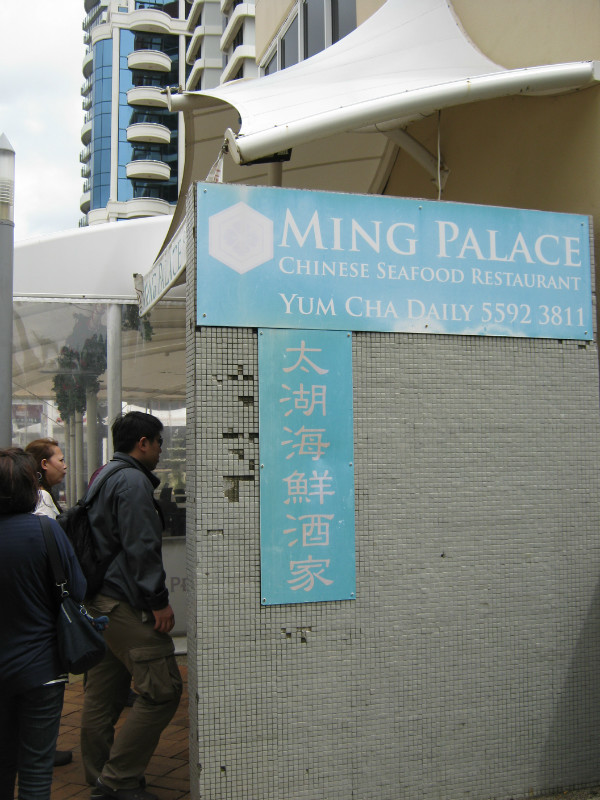
The legendary Australian lobster — finally got to see (and taste) one!

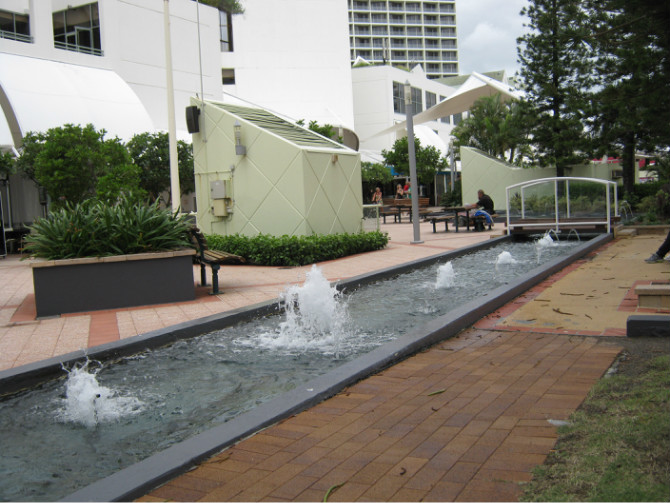
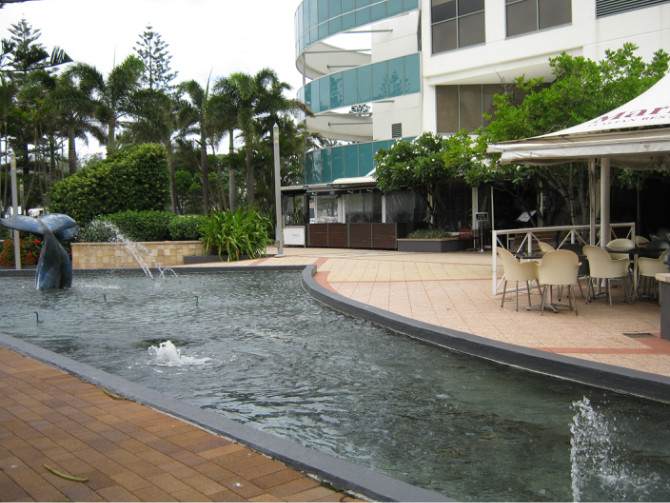
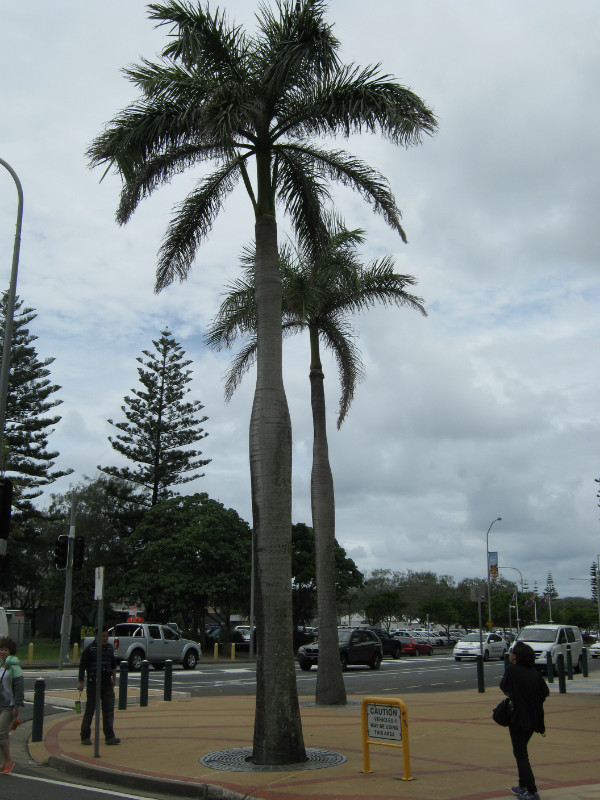
After lunch, we took a bus to Brisbane — about an hour’s drive. Most highways in Australia are free, and the country is generous with social benefits. With a small population, the government encourages births — the state pays for raising kids, gives a milk allowance until age 16 (about $180 per week), free compulsory education, free healthcare, and secure retirement. Brisbane is Australia’s third largest city, the country’s largest seaport, the capital of Queensland, and a major commercial and industrial center. It sits on both banks of the lower Brisbane River, about 25 km from the river mouth. The area is 2,494 sq km, with a population of about 1.12 million. West of the Great Dividing Range is the Darling Downs, a region for wheat, flax, sheep, and dairy. The name Brisbane comes from New South Wales colonial governor Sir Thomas Makdougall Brisbane, who encouraged settlement here and for whom the river (and thus the city) were named. First, we visited Kangaroo Point and Story Bridge. Kangaroo Point got its name from kangaroo overpopulation and Aboriginal hunting; Story Bridge was designed by Mr. Story (that’s really his name), and, despite the name, there’s no “story” behind it — but he also designed the more famous Sydney Harbour Bridge.
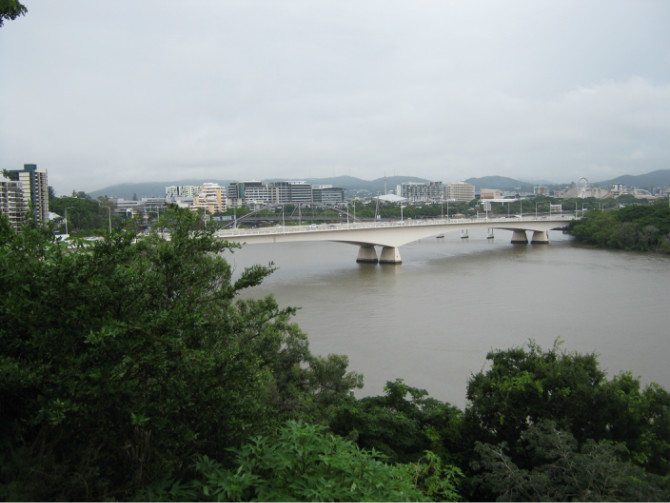
This is the backdrop for Brisbane’s 5 a.m. news broadcast.
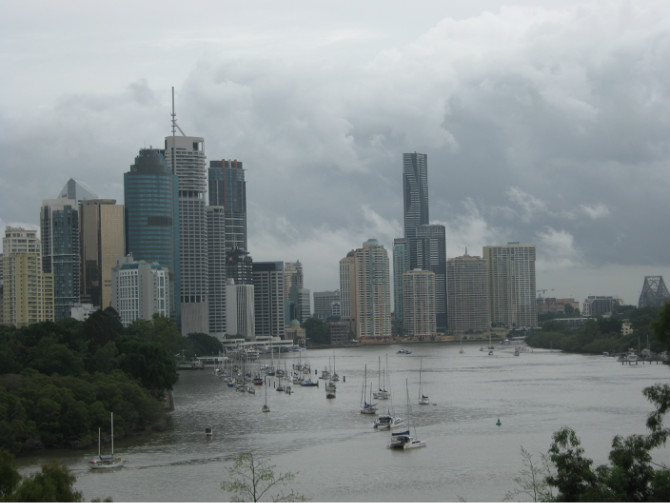
City scenery.
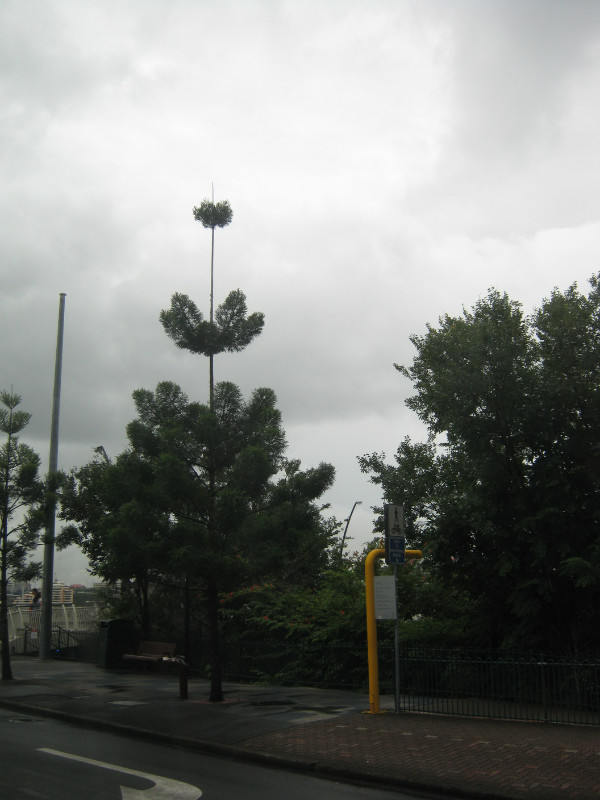
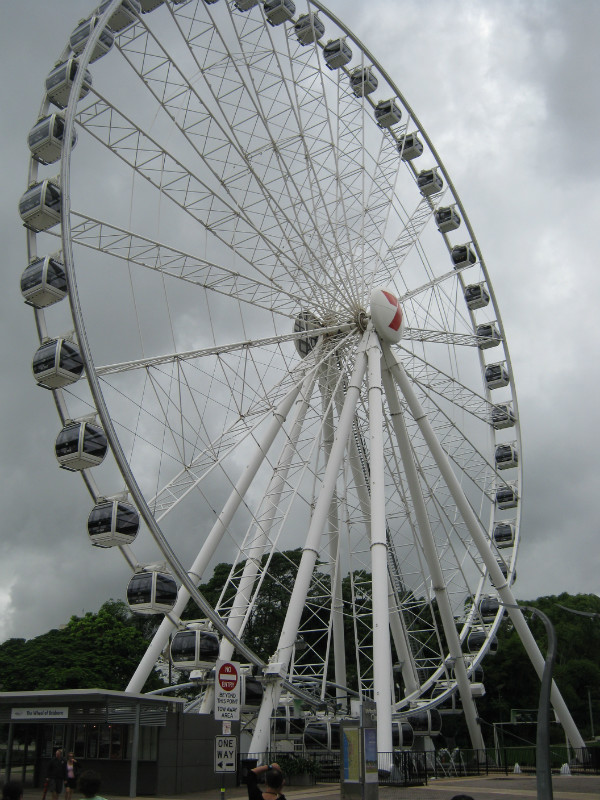

If you look at Australia’s socioeconomic structure by population, it’s shaped like a “football” (soccer ball). The pointed ends are the rich and poor (a small minority), while the middle bulge represents the large middle class — the bulk of society. Then we toured South Bank Parklands. Here’s some history: 1988 marked the 200th anniversary of the British settlement in Australia, and to commemorate, Brisbane hosted the World Expo — the largest ever held in the Southern Hemisphere, with 52 countries and regions participating. China’s pavilion featured a 360-degree panoramic film and won top honors. South Bank Parklands occupies 16 hectares along the Brisbane River’s southern bank. After the Expo, the city planned to turn the site into apartments, but citizens protested and, by referendum, turned it into today’s waterfront park and cultural precinct. It’s widely considered Australia’s best city park. Very few Expo buildings remain, but the first thing you see is a Nepalese temple — a gift from Nepal for the 1988 Expo, built entirely from teak over two years. It’s small but exquisite, with intricate carvings on doors, windows, and eaves. The guide said Nepal left it because they couldn’t afford to ship it home, so it became a semi-permanent gift to Australia.
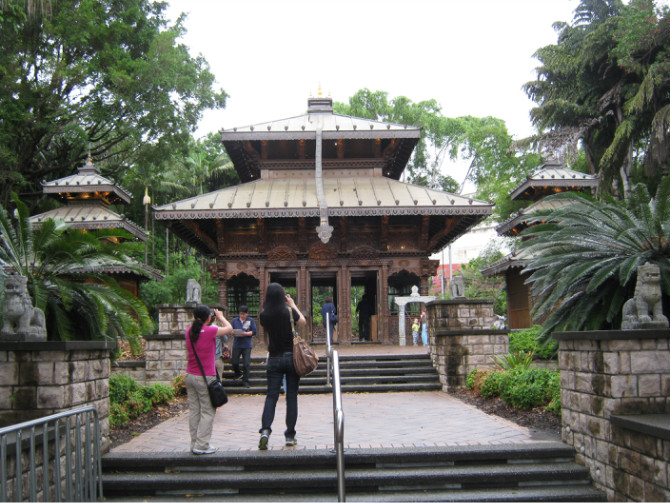 South Bank Parklands
South Bank Parklands
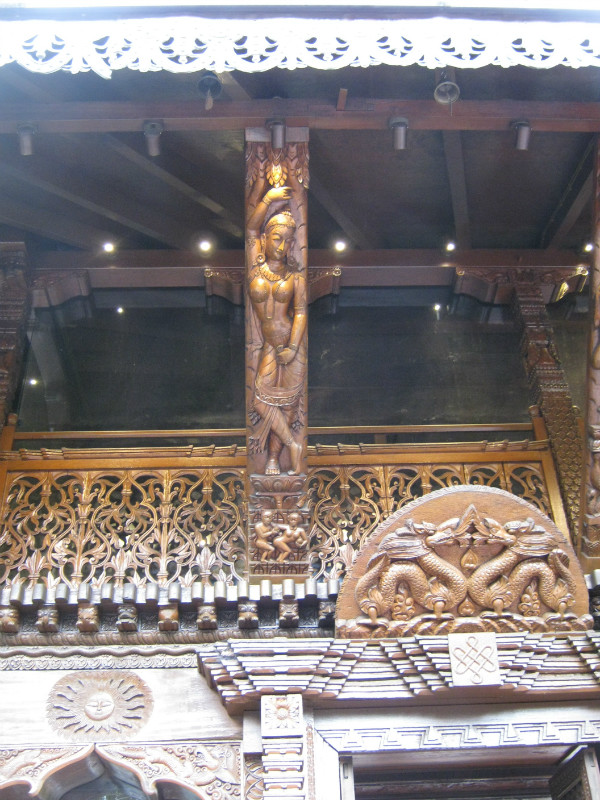 South Bank Parklands
South Bank Parklands
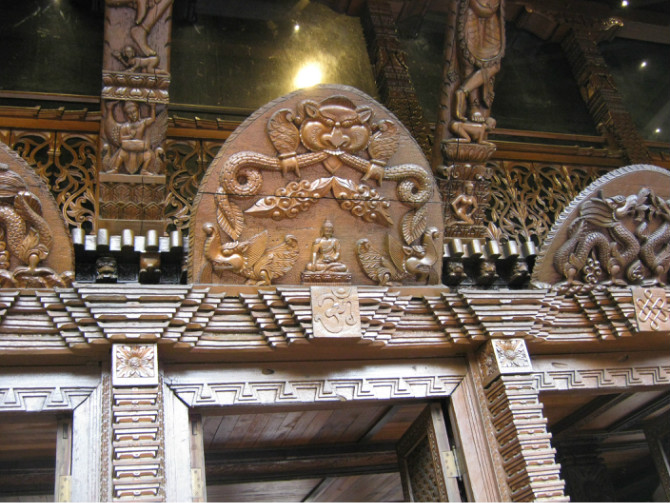
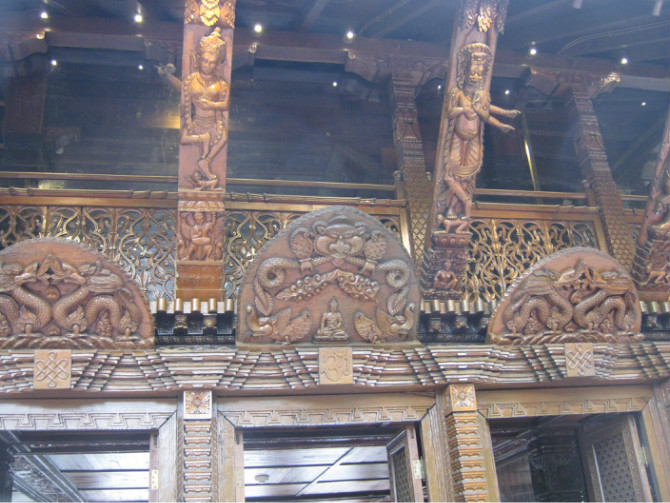 South Bank Parklands
South Bank Parklands
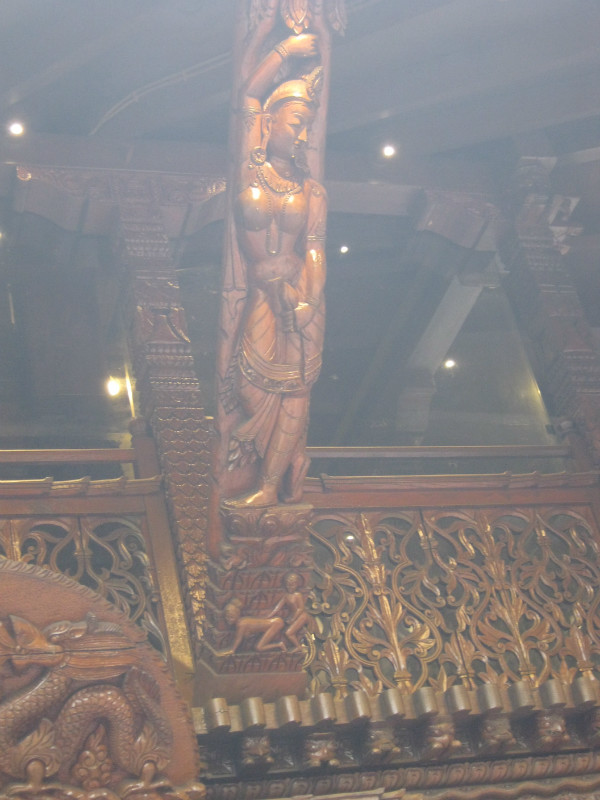
Relaxed locals enjoying South Bank Parklands
 South Bank Parklands
South Bank Parklands

Riverside wharf
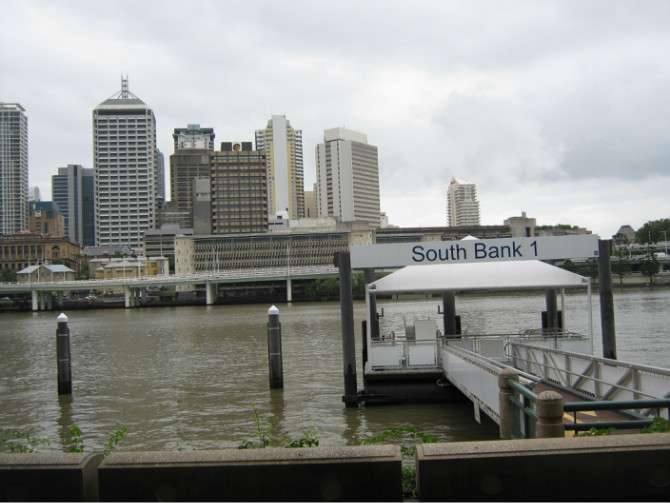
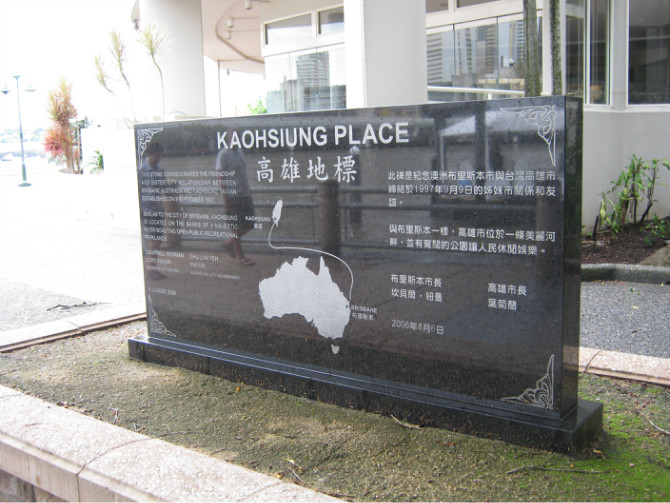
We saw lots of water birds like this — birds are protected in Australia, so they’re not afraid of people and you can get close for photos.
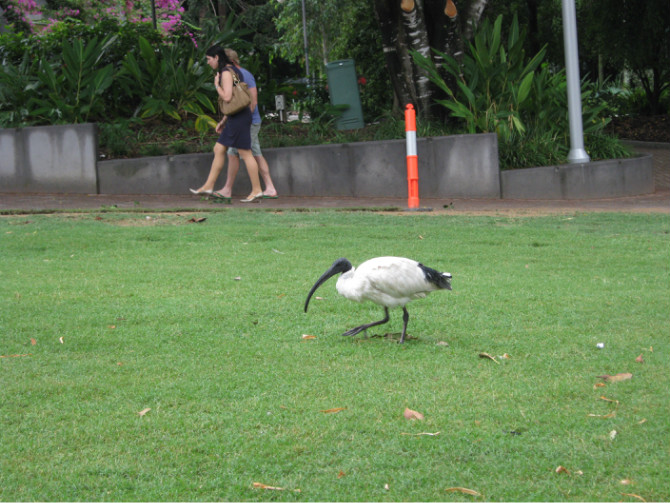
Gasoline in Australia is quite cheap — 1.4 AUD a liter, and cars are cheap too. With free highways, many locals buy homes by the sea and commute to city jobs, about an hour’s drive on the freeway. The local dream: first own a car, second a house, third a private yacht. Their motto is “don’t just want what you once had, want what you want now,” and also “don’t leave money unspent in the bank when you’re gone.” In the afternoon, we returned to Gold Coast City. Our hotel was close to the beach. Feeling tired, I skipped the beach for a nap, but everyone who went said it was beautiful, so I resolved to see the sunrise over the sea the next morning. Here’s the entrance to our hotel:
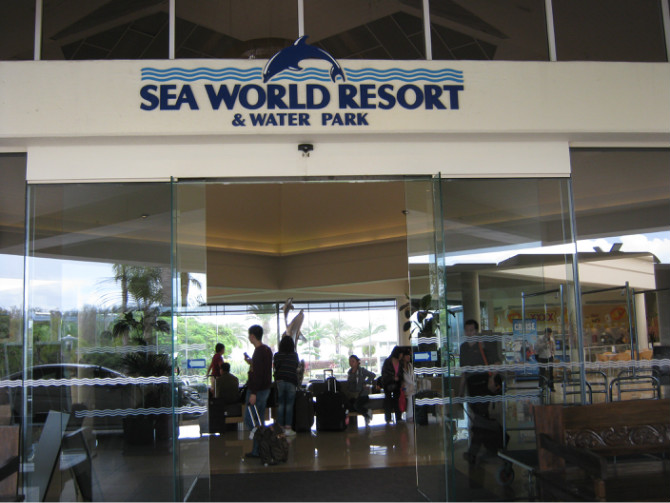 Sea World Resort
Sea World Resort
Hotel lobby
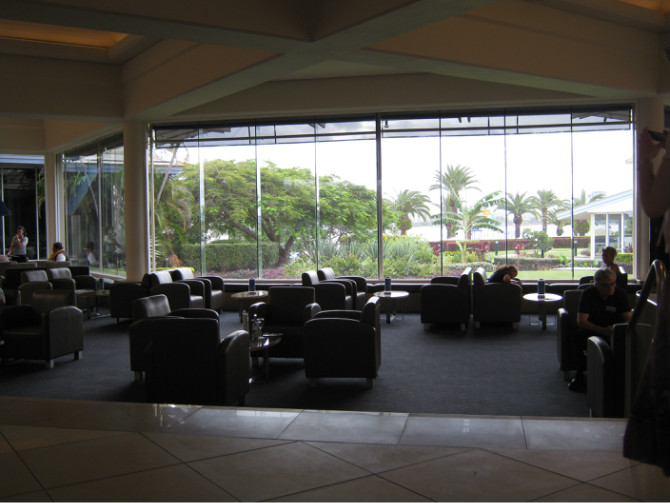 Sea World Resort
Sea World Resort
For dinner, we took a coach to a Western buffet — the red wine was great. Surprised to see a student party on the restaurant’s second floor: local high schoolers invited their parents, everyone was excited, and the kids seemed really happy.
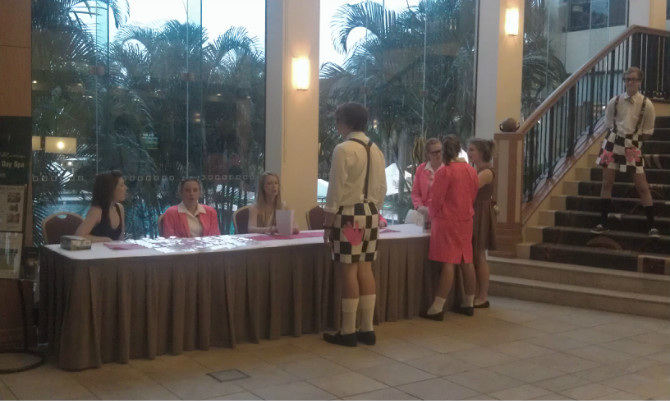 Sea World Resort
Sea World Resort
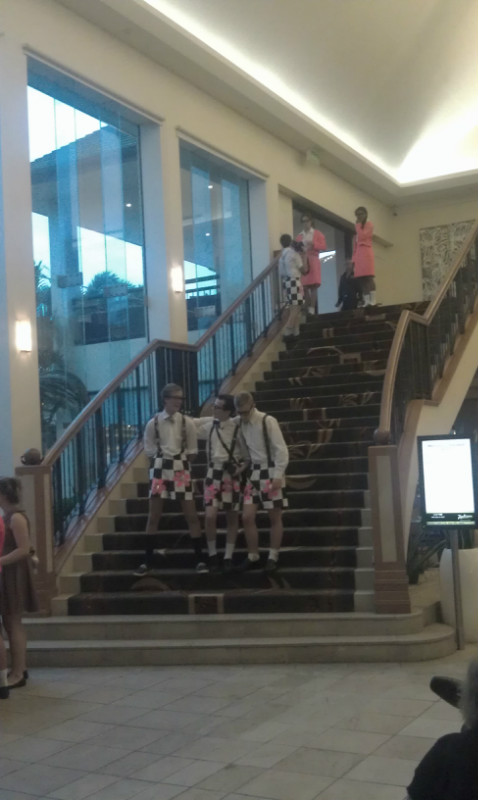 Sea World Resort
Sea World Resort
After returning to the hotel, my roommate and I went for a swim in the outdoor pool. There were lots of Chinese tourists — I met several Chinese ladies in their 60s. They had retired and were traveling, coming through New Zealand and now Australia. One Beijing auntie told me she only learned to swim at 50, and now swims really well!
LIMITED TIME OFFERS
Related Apartments
Premium accommodations at exceptional prices.
Elevate your travel experience with our carefully curated holiday deals.
 Berry Street, North Sydney NSW, Australia
Berry Street, North Sydney NSW, Australia $200 - $260
-
2 Bedrooms
-
2 Baths
-
2 Guests
 Buffalo Road, Ryde NSW, Australia
Buffalo Road, Ryde NSW, Australia $168 - $280
-
2 Bedrooms
-
1 Baths
-
2 Guests
 Essex Street, Epping NSW, Australia
Essex Street, Epping NSW, Australia $150 - $210
-
2 Bedrooms
-
2 Baths
-
2 Guests


